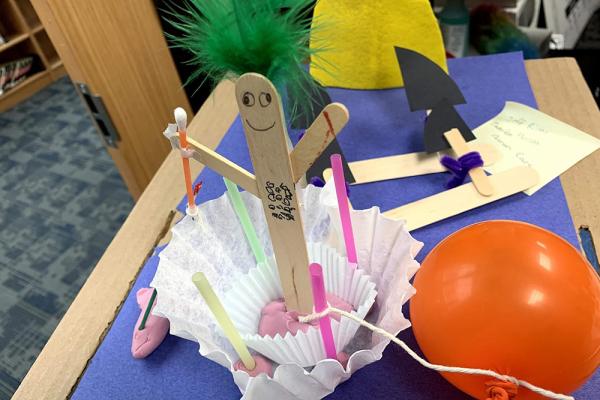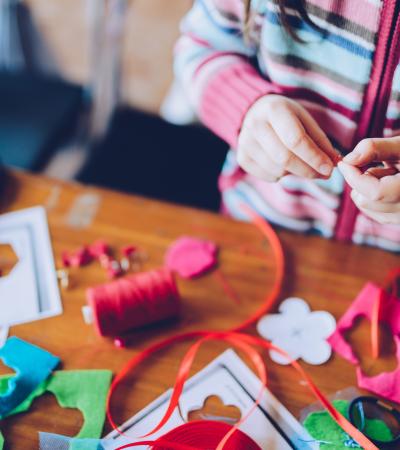As librarians, we are passionate advocates for makerspace programming. We share with teachers and students how makerspaces engage and develop critical thinking and problem solving skills. Our school library has supported many makerspace programming events, from Makerspace Monday to our monthly Makerspace challenge.
The 4Cs of education are constantly taking place during a makerspace activity in your library. We love watching the collaboration, the critical thinking, the communication, and of course the creativity pour out of our students' minds. All of this was readily apparent when we recently brought the makerspace concept to English class.

"Lord of the Flies"
For several years we've been working with a freshman English teacher on a character analysis project for "Lord of the Flies." Despite teaching how to find information in our databases on character analysis and literary criticism, students seemed to analyze the movie characters and not the characters from the novel.
Approaching the English teacher, we suggested using makerspaces to generate some different ways of student thinking. We explained that makerspaces have a way of getting students to think differently, more deeply and outside of the traditional assignment.
To accomplish what we set out to do — get students deeply analyzing the characters — we had students work in groups, assigning each group a character from the text. Using a simple graphic organizer, the students listed character traits and located quotes from the book to support their descriptive brainstorming.
After the brainstorming, students were provided with a variety of materials to create a character from "Lord of the Flies." Their final products, visual representations of their characters and the identified character traits, demonstrated a deep understanding of the text.
"Old Man and the Sea"
Since our first success with "Lord of the Flies," we've used makerspace activities to demonstrate understanding for many texts. Our 10th graders read "Old Man and the Sea." As a cumulative activity students were asked to evaluate a literary element of the story, create a visual (makerspace) representation and provided text evidence.
Our 9th graders were given a similar task. Each group of students was given a different short story and asked to identify three literary devices used in their assigned short story. Students created a visual representation to support their analyses and, of course, provided evidence from the text. For example, if one of the literary devices used was plot twist, students may have twisted materials together as a visual representation for that identified literary element.
What have we seen by adding makerspace and hands-on activities to literary analysis? Students are engaged, and it is evident that higher-order thinking and problem solving is happening.
Before students begin collaborating, communicating and making, we ask them to write. By providing students time to reflect in writing students are more prepared to communicate, discuss and create.
Also, a makerspace activity like that of "Old Man and the Sea" meets many of our AASL standards for learners. Consider Collaborate: As our learners “work effectively with others to broaden perspectives and work toward common goals,” they are actively participating in group discussions and developing new understandings (III. A.1, III.A.2, III.D.1). They are providing and receiving feedback (III.C.1). Our students are creating and through group interaction solving problems (III.A.2, III.C.2).
What about time? Use Flipgrid
If you and your collaboration partner teacher are short on time, Flipgrid is a great resource. We had students create a three-minute presentation outlining their analysis and supporting evidence. Students had the experience of writing, speaking and sharing their finished product while creating their own media.
What about public libraries?
Our public library offers teen book clubs. Students read the selection and then meet over snacks in the teen zone of the library to discuss the book.
Adding makerspace activities in this environment would be a fantastic added value to the discussion of the book club selection. Teens are creative, and allowing them to share that creative side sparks interest and keeps them coming back for more.
There are many benefits to makerspaces in library programing, whether it is a lunchtime activity or an assignment that demonstrates understanding of content. Students learn to work together, share their ideas and receive feedback. Students are using critical thinking skills and problem solving.
How do you use makerspaces in your library programming?



